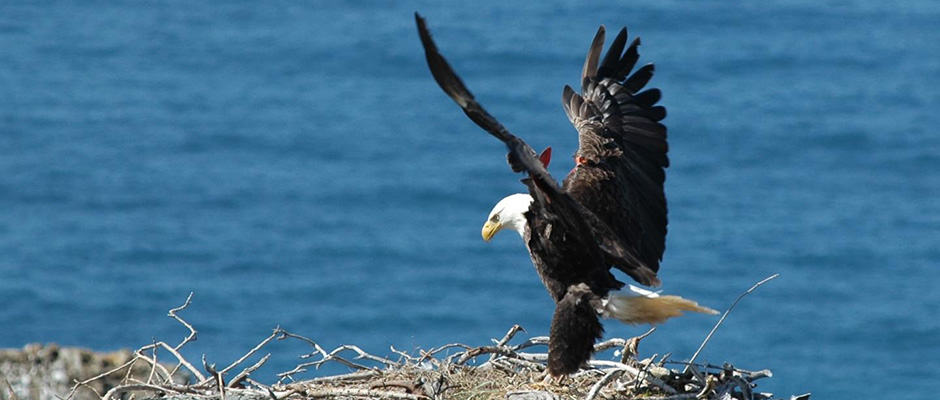Share this article
Bald Eagle Diet Points to Intact Ecosystem
A sustained natural diet of an animal that soars over the top of the food chain is a good indicator that an ecosystem is intact.
New research tracking the eating habits of bald eagles (Haliaeetus leucocephalus) reintroduced to the Channel Islands of California over the past two decades shows the birds are thriving on diets of fish and seabirds — something that closely mimics the food they were probably eating in prehistoric times.
“It’s just neat to see a successful reintroduction of a top predator like bald eagles,” said Seth Newsome, an assistant biology professor in University of New Mexico and a lead author in a study published recently in The Condor: Ornithological Applications.
The authors of the study examined the diets of bald eagles through collecting prey remains from nests and doing carbon and nitrogen isotope analysis of feathers from 2010-2011. They then compared the results to data gathered from old nests from the early 20th century before the eagles disappeared from the Channel Islands due to human predation and DDT-related deaths.
They found that modern day eagles’ diets differ a lot compared to those of the early 20th century, when the islands were mostly inhabited by ranchers. Historical eagle nests on San Miguel Island revealed the birds there largely relied on sheep for sustenance.
“Eagles, interestingly, were eating a lot of terrestrial food,” Newsome said. “These eagles were adapting to the local conditions at the time.”
Reintroduced eagles don’t have the same options on their plates though, and even differ depending on whether they are on the northern or southern Channel Islands. “Those sorts of resources aren’t there because, for good reason, they’ve been taken out of the islands,” Newsome said about land food resources.
The birds on Santa Catalina Island in the south rely on fish offal tossed from recreational fishing boats around the island today. Newsome said the birds from that island follow those boats around, eating scraps cast off by the fishing boats.
The birds on the northern islands mostly consumed seabirds, a diet that probably more closely resembles what Channel Island eagles were eating before ranchers started living there.
“One of the main reasons why eagle reintroduction has been so successful on the northern Channel Islands is that they can use that seabird prey base,” Newsome said.
Newsome said it’s a sign of the ecosystem being intact — something rare in an area so close to a major city such as Los Angeles.
“There’s a lot of successful conservation that has gone on in the northern Channel Islands.”
Header Image:
A breeding male bald eagle lands at the West End on Santa Catalina Island, California. A study comparing reintroduced eagle diets with those of historical eagle populations shows the birds’ palate is back to something like they were in prehistoric times.
Image Credit: P. Sharpe








